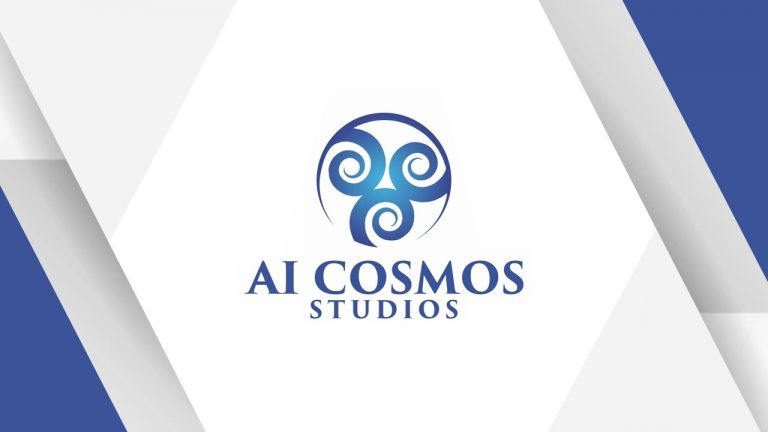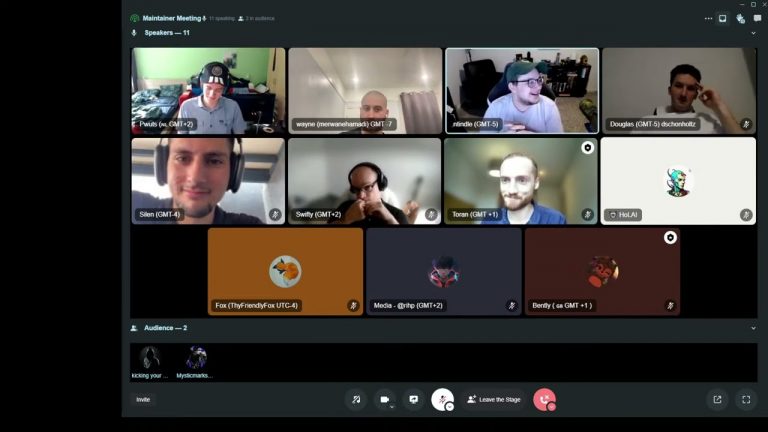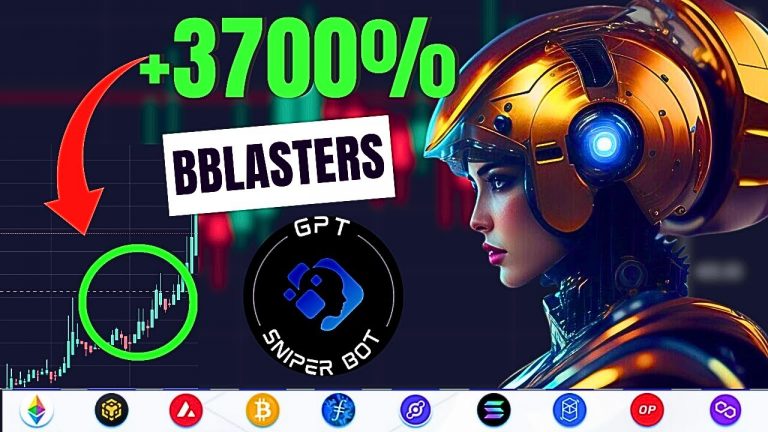I built my own AutoGPT that makes videos
“Video production is hard, so I used the latest AI technology to write, narrate, and edit videos in my own style. Everybody is suddenly worried Artificial”
The Video
The creator of the video titled “I built my own AutoGPT that makes videos” has developed their own AutoGPT using a combination of tools such as GPT-4, Puppeteer, voice cloning, and ffmpeg. They explain that AutoGPT and similar tools work by using a single human objective as a starting point and prompting themselves continually until the objective is met. The creator mentions other efforts underway, such as hugging GPT from Microsoft and Jarvis, to create more general-purpose AI tools.
His AutoGPT uses JavaScript and a video idea as input, and uses GPT-4 to write a video script. They use secondary prompts to identify images, code snippets, and voice narration. The video script includes code snippets, which are generated using Puppeteer to go to a site called rey to generate a PNG image for the code. The AutoGPT identifies people or logos in the script and returns a link to an image on the internet for that graphic, which can then be downloaded and written to the file system.
He also used a program created by someone else on Twitter to clone their voice and create the narration for the video. They mention that the quality of the cloned voice is decent but can still be improved. The final step is to edit the video, and the creator initially attempted to have GPT-4 write its own ffmpeg script, but it wasn’t reliable. Therefore, they wrote some of their own code with fluent ffmpeg to combine the assets together into a single video.
The final result is a video about the programming language Rust, which was created by AI in just 30 seconds. The creator mentions that had they not put “made by AI” in the corner, viewers would not have been able to tell the difference. However, they have not released the code publicly due to fears about the impact it could have on humanity. The creator concludes by saying that now that they have been flawlessly cloned by AI, they can focus entirely on new angular content.
Revolutionizing Video Creation: My Personal Journey with AutoGPT”
As artificial intelligence technology continues to evolve, it opens up new opportunities for creativity and innovation. One of these exciting possibilities is the use of AutoGPT to generate videos. In this blog post, we’ll explore how AutoGPT works, the tools used to build it, and how it can be used to create videos.
What is AutoGPT?
AutoGPT, or “Autoregressive Generative Pre-training Transformer,” is an autonomous system that uses deep learning to create new text or images. It works by taking a single objective from a human as a starting point and then building a task list to achieve that objective. It uses open AI’s GPT models and a vector database like Pinecone DB to provide it with long-term memory so that it can keep track of what it’s been doing.
Tools Used to Build AutoGPT To build AutoGPT, I used a combination of tools that included GPT-4, Puppeteer, voice cloning, and ffmpeg. Each of these tools played a critical role in the process of creating videos.
- GPT-4 was used to write the video script.
- Puppeteer was used to generate PNG images for code snippets.
- Voice cloning was used to generate narration for the video.
- Ffmpeg was used to edit and combine the assets.
Building AutoGPT
To build my own AutoGPT, I used JavaScript as the programming language. The AutoGPT takes a video idea as an input and uses GPT-4 to write a video script. It then uses a secondary prompt to figure out how to turn that script into an actual video.
Identifying Assets
To create a video, we need assets like images, code snippets, and voice narration. The AutoGPT identifies people or logos in the script and returns a link to an image on the internet for that graphic, which can then be downloaded and written to the file system. For code snippets, the AutoGPT uses Puppeteer to generate a PNG image.
Generating Narration
For voice narration, I used a program created by someone else on Twitter that clones a person’s voice. I used this program to clone my own voice, using about two and a half hours of recordings. The final step was to make an API call to generate the voice and save it as a WAV file.
Editing the Video
To edit the video, I initially attempted to have GPT-4 write its own ffmpeg script. However, it wasn’t very reliable. Therefore, I wrote some of my own code with fluent ffmpeg to combine the assets together into a single video.
The Final Result
The final result was a video about the programming language Rust, which was created by AI in just 30 seconds. The video was created entirely by AI, and had I not put “made by AI” in the corner, viewers would not have been able to tell the difference.
Other AI Tools Under Development
AutoGPT is just one example of the AI tools being developed to make our lives easier. Other efforts underway include hugging GPT from Microsoft and Jarvis, which uses an llm as a controller to interact with other AI models on hugging phase to create a more general-purpose AI tool. A new paper from Stanford and Google research has recently been published where 25 AI agents were put in a simulated world, producing believable human behavior.
The Future of AI in Video Creation Creating an AutoGPT and using it to generate videos is a fascinating process that opens up new opportunities for creativity and innovation. Although it’s still not true AGI, tools like AutoGPT are a great way to automate repetitive tasks and free up time for more
Key Points
- AutoGPT is an autonomous system that surpasses human capabilities.
- AutoGPT works by taking a single objective from a human as a starting point and then building a task list to achieve that objective.
- To build an AutoGPT, you can use a combination of tools, including GPT-4, Puppeteer, voice cloning, and ffmpeg.
- AutoGPT uses GPT-4 to write a video script, and then uses a secondary prompt to figure out how to turn that script into an actual video.
- AutoGPT identifies people or logos in the script and returns a link to an image on the internet for that graphic, which can then be downloaded and written to the file system.
- AutoGPT uses voice cloning to generate narration for the video, and then uses ffmpeg to edit and combine the assets.
- The final result of using AutoGPT is a video that was created entirely by AI, and had it not been disclosed, viewers would not have been able to tell the difference.
Top AI Tools For 2025
Hailuo’s Minimax, : One of the best text and image to video generators.
VidNoz: Free Image to Video, Video Translator, Video Dubbing, Music Video Generator, Video Compressor and many more.
Jogg AI: Image to Video, URL to Video, AI Avatar, Photo Avatar, AI Ad Generator, Text to Speech
Turn simple text into polished, publish-ready videos with InVideo AI Video Generator. Perfect for marketers, creators, and businesses looking to streamline content production. Save time, boost engagement, and elevate your video game today! 🚀 This powerful tool:
✅ Generates scripts and matches them with video clips.
✅ Adds subtitles, music, and transitions seamlessly.
✅ Offers an intuitive editor for final touches.
✅ Allows video creation at scale with zero learning curve!
Opus Clip: Use AI to analyze a video, identify the most compelling parts, and rearrange them into short clips. It can also add captions, emojis, and other features. Incredible 7 day (no credit card) free trial then paid or free plan with 25 free clips per month. Also easily re-post with Repurpose IO. Also consider Vid AI, Munch,SubMagic, Klap, TubeMagic, Vizard AI, Vadoo TV, Arcads AI, Smart Short, Auto Shorts AI, ElevenLabs, Gravitywrite, Leonardo AI, and Big Motion AI as a top alternates and add-ons.
Aitubo : With AI Video Generator, Face Swap (free) Image & Video, Image to Video, Text to Video, Meme Generator, Anime Generator, Song Generator, Dance Generator, Image Generator, Background Remover, Script to Video, Video Captions, Avatar, Image Editor, Phantom, Headshot Generator, Upscaler, Girl Generator, Flux Image Generator, Ideogram Image Generator, Recraft V3 Image Generator, and more is an advanced AI-powered tool designed to help users craft creative images with remarkable ease.
Purchase Monitized Accounts for Youtube and TikTok
(Use coupon code “AISALESMARKET” for a 5% discount)
Vidau AI: Free Video Generator, Subtitle Remover, Video Translate, Video Translator, URL to Video, AI Image to Video, AI Avatars, Subtitle Translate, Subtitle Translator, AI Text to Video, Text to Speech, AI Voice Clone, Video to Video, AI Script Generator, AI Video Editor, Instagram Video Downloader, YouTube to MP3, YouTube Video Downloader, YouTube to MP4, TikTok Video Downloader, Twitter Video Downloader, Pinterest Video Downloader
- Jasper: Your AI Copywriting Assistant (🏆 free 20,000 words per month )
- WordAI: AI Text Rewriter (3 day free trial)
- Article Forge: High quality, AI content generator (5 day free trial)
- Copymatic: AI Copywriter & Content Writer
- Outranking: Content writing with SEO scoring
- Word Hero: Generate AI-powered content in 1 click.
- ParaphraserIO: Free and paid
- Humatar AI: Chatbot with free 60 page starte plan
- NeuroFlash: AI Writing (2,000 free words per month)
- RytR: Best AI Writer 🏆– Content Generator & Writing (free forever 10,000 characters per month)
- AI SEO Repurposer: Free and upgraded ChatGPT plugin (info).
- Writesonic: Generate & Publish, in a Click (free 10,000 words)
- AIWriter: The AI Text Generator built to be trusted (7 day free trial)
- Quillbot: Paraphrasing Tool (free basic forever)
- Frase: Best SEO Content Optimization Tool & AI Writer (5 day free trial for $1)
- Notion AI: Write and summarize (free plan for personal use)
- Unbounce’s SmartCopy: ideate, iterate, and write custom, high-quality, engaging professional copy (try free forever)
- Creaitor: Let the AI create for you (3 day free trial)
- Scalenut: AI Powered SEO & Content Marketing Platform (free forever 2,000 words)
- CopyAI: 🏆Best AI Writer ( free forever 2,000 words per month )
- WriterX: Your AI Writing Companion (7 day free trial)
- Sudowrite: Write your novel or screenplay faster (4,000 free words)
- Get Munch: Get Instant Social Posts Based on Your Video Content
- Simplified: All-in-one AI content. (try free forever)
- WriteCream: Create marketing content & sales emails in seconds (try free forever)
- Genie: AI research assistant for students (14 day free trial)
Other top products and addon tool ideas: ContentBot, OriginalityAI (AI checker), Canva, Twinr app creator,
SEO: SurferSEO, SemRush, Mangools Tools, RankerX, GrowthBar SEO (5 day trial); Voice Swap: VoiceAI
Video: InVideo, PictoryAI, FlexClip, vidIQ, TubeBuddy; Video FaceSwap: DeepSwapAI (multiple faces), Swap Face (free with watermark), Heygen (2 min. free);
Social Media Management: Radaar Voice: Descript AI , PlayHt; Email: GetResponse; Hosting: Elementor; Plugins: Elementor
Books: Sqribble Ebook in 5 minutes, BookBolt research design publish Amazon KDP, Reedsy,
Print on Demand: Printify
FAQ
Q: What is AutoGPT? A: AutoGPT, or “Autoregressive Generative Pre-training Transformer,” is an autonomous system that uses deep learning to create new text or images. It works by taking a single objective from a human as a starting point and then building a task list to achieve that objective.
Q: How does AutoGPT work? A: AutoGPT uses open AI’s GPT models and a vector database like Pinecone DB to provide it with long-term memory so that it can keep track of what it’s been doing. It takes a video idea as an input and uses GPT-4 to write a video script. It then uses a secondary prompt to figure out how to turn that script into an actual video.
Q: What tools are used to build an AutoGPT? A: To build an AutoGPT, you can use a combination of tools, including GPT-4, Puppeteer, voice cloning, and ffmpeg.
Q: How does AutoGPT identify assets for video creation? A: AutoGPT identifies people or logos in the script and returns a link to an image on the internet for that graphic, which can then be downloaded and written to the file system. For code snippets, AutoGPT uses Puppeteer to generate a PNG image.
Q: How does AutoGPT generate narration for the video? A: AutoGPT uses a program that clones a person’s voice to generate narration for the video. The program was created by someone else on Twitter and uses about two and a half hours of recordings to clone a person’s voice.
Q: How does AutoGPT edit and combine assets for the video? A: Initially, AutoGPT attempted to have GPT-4 write its own ffmpeg script to edit the video, but it wasn’t very reliable. Instead, some of its own code with fluent ffmpeg was used to combine the assets together into a single video.
Q: What is the final result of using AutoGPT to create a video? A: The final result is a video that was created entirely by AI, and had it not been disclosed, viewers would not have been able to tell the difference. In the transcript, the video created was about the programming language Rust, and it only took AI about 30 seconds to create.
Q: How long did it take to create the video using AutoGPT? A: The video about the programming language Rust was created by AI in just 30 seconds.
Q: Can AutoGPT be used for other types of videos? A: Yes, AutoGPT can be used for other types of videos as well. The input for AutoGPT is a video idea, so as long as there’s a clear objective, AutoGPT can generate a script and turn it into a video.
Q: Are there other AI tools being developed for video creation? A: Yes, there are other AI tools being developed for video creation, including hugging GPT from Microsoft and Jarvis, which uses an llm as a controller to interact with other AI models on hugging phase to create a more general-purpose AI tool.
Q: What’s the future of AI in video creation? A: AI technology is constantly evolving, and AutoGPT is just one example of the AI tools being developed to make our lives easier. AutoGPT can automate repetitive tasks and free up time for more creative endeavors. The future of AI in video creation is promising, and we can expect to see more exciting innovations in the years to come.






